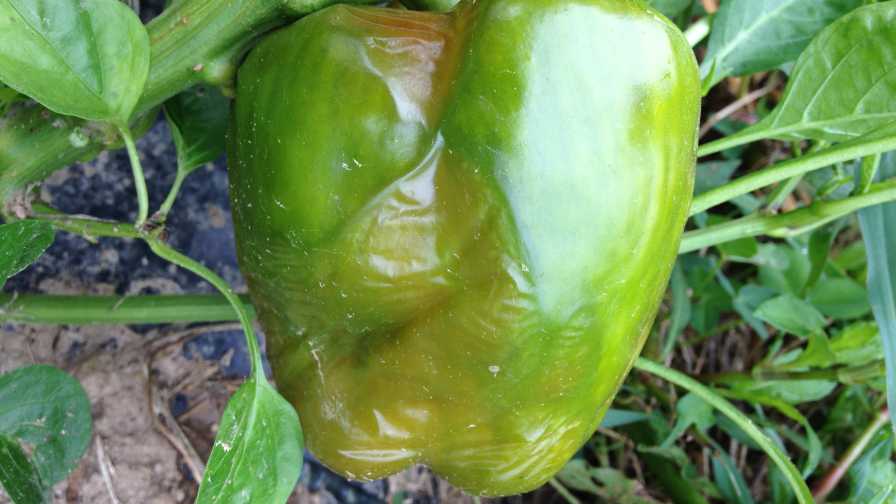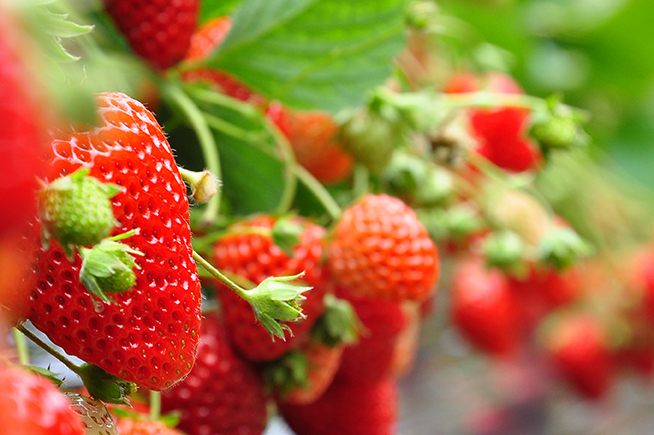Take a Hard Line Against Bacterial Soft Rot of Pepper

Bacterial soft rot of pepper symptoms. Photo courtesy of The Ohio State University
Pest Specs
Bacterial soft rot of pepper, caused by the bacterium Erwinia carotovora ssp. carotovora, occurs worldwide and can be a particular problem during periods of high temperature, high humidity, and elevated rainfall.
Identification
Initial symptoms may appear on pepper leaves, which display darkened veins followed by leaf chlorosis and necrosis. Nearby stems may show internal dark brown discoloration.
As the disease progresses, dry, dark-brown or black stem cankers develop, often resulting in the breakage of branches. Bacterial ooze may or may not be evident from diseased tissues. The affected plants wilt and die later. The fruit peduncle is highly susceptible and is frequently the initial point of infection. Both ripe and green fruit may be affected.
Initially, the lesions on the fruit are light- to dark-colored, water-soaked, and somewhat sunken. Affected areas expand rapidly, particularly under high temperatures, and fruit lose their texture and collapse.
In later stages, bacterial ooze may develop from affected areas and secondary organisms often follow, invading the rotted tissue. The affected fruit hang from the plant like a water-filled bag.
Survival and Spread
The bacteria may persist in fields where peppers are rotated with other susceptible crops such as cabbage and potato.
The bacteria may be seedborne and can be transmitted by drainage water, irrigation water, or by sprinkler irrigation; but a wound is necessary for infection to occur. Wounding often arises from rough handling of plants during weeding, or due to a strong wind, or from insect feeding. Worms may introduce bacteria into the fruit peduncle of pepper during feeding.
A high rate of nitrogen fertilization is associated with increased susceptibility to soft rot. Warm, moist weather also is highly favorable for infection. Once bacterial decay occurs in the fruit, inoculum from the rotting fruit can be readily dispersed to nearby healthy fruit or by workers handling the fruit during harvest. Postharvest soft rot of pepper fruit arises when infected fruit is harvested with healthy fruit; harvest containers are contaminated with the bacteria; fruit is damaged during packing; or if fruit is subjected to contaminated wash water, contaminated surfaces, or soil debris.
Management Methods
Early detection of symptoms, the disinfection of tools and picking buckets, avoidance of wounding plants, and the maintenance of rigorous sanitation practices will reduce disease incidence and severity.
Careful weeding, cultivating, and harvesting are important to minimize fruit injury. Avoid working in fields when the foliage is wet. Work in unaffected areas first and in affected areas last.
In fields where widespread infection is present, rotation with corn or beans and deep plow-down of crop residues will reduce levels of inoculum.
Prevent the occurrence of insect wounds by controlling insects that feed on pepper tissue.
There are no resistant varieties or pesticides to control bacterial soft rot of pepper.
For postharvest, use chlorinated wash water to reduce populations of soft rot bacteria and to reduce the risk of cross infection during washing. Allow fruit to dry thoroughly. During packing and storage, the fruit should be kept clean and maintained in a cool, dry place.










